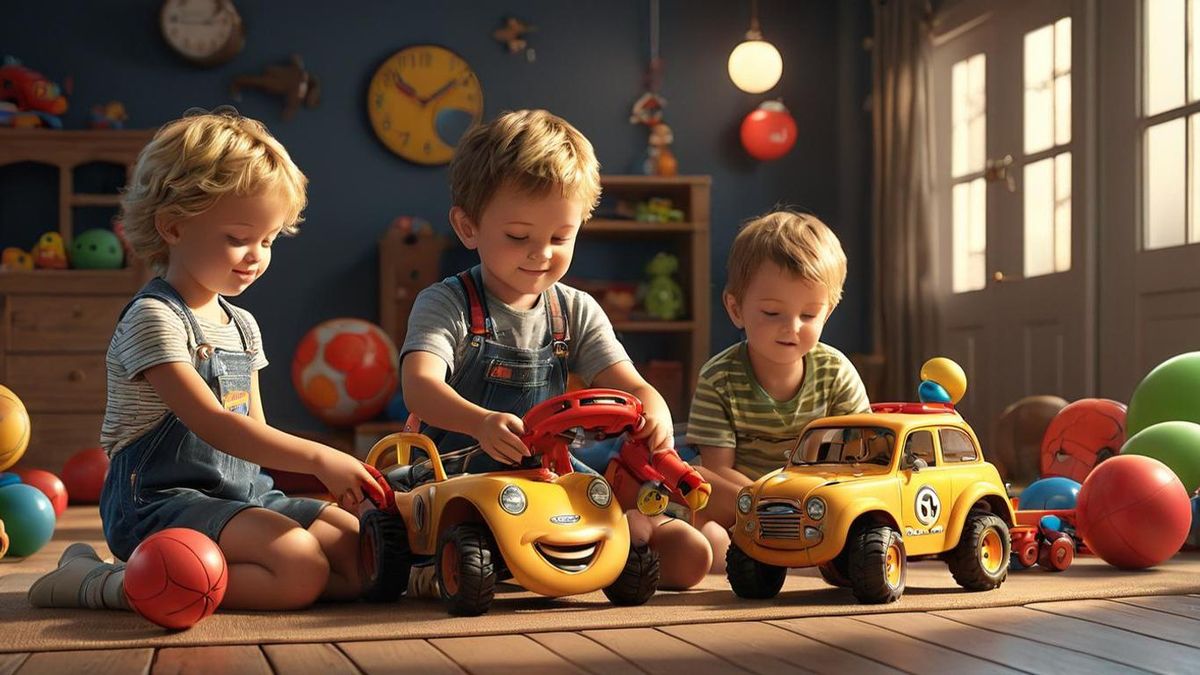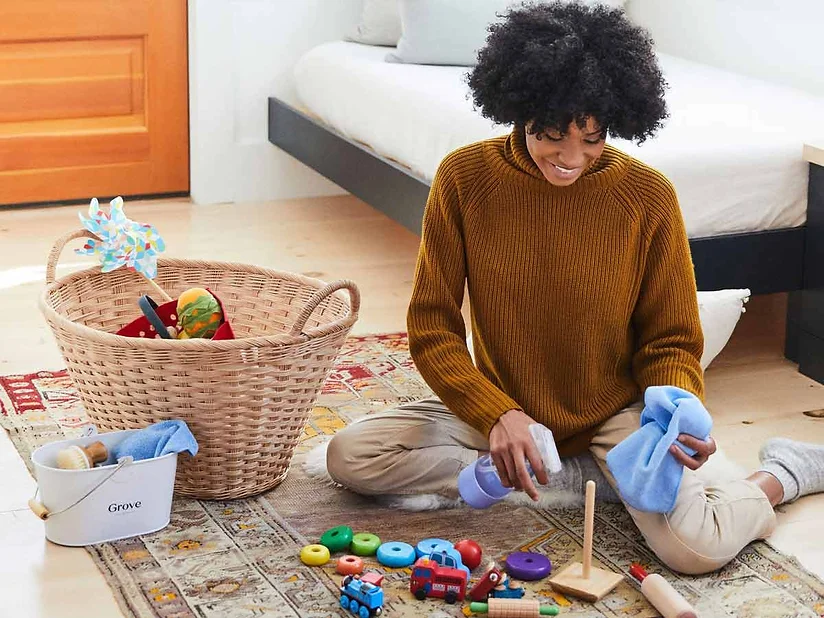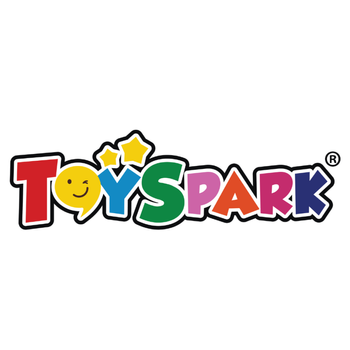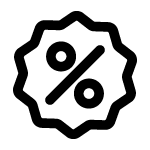
Keeping your child's toys clean is essential for maintaining a healthy play environment. Toys can quickly become breeding grounds for germs, bacteria, and viruses, especially if they're frequently shared among children or used outdoors. This comprehensive guide will walk you through the best practices and methods for cleaning various types of toys, ensuring they remain safe and hygienic for your little ones.
Understanding the Importance of Clean Toys

Toys are an integral part of childhood, providing entertainment, learning opportunities, and comfort. However, they are also prone to accumulating dirt, grime, and germs from frequent handling, exposure to different environments, and contact with other children. Regular cleaning of toys can help prevent the spread of illnesses, especially during flu season or a pandemic, and keep your child's play area safe and healthy.
Cleaning Methods for Different Types of Toys
1) Plastic Toys


Click here to preview product: Market Shopping Cart Role
- Dishwasher Safe: Many hard plastic toys can be cleaned in the dishwasher, which uses high temperatures to kill germs effectively. Ensure the toys are dishwasher-safe and place them on the top rack to prevent melting.
- Hand Washing: For larger plastic toys or those with electronic components, use warm soapy water and a cloth or sponge. Rinse thoroughly and let them air dry.
- Disinfecting: After cleaning, you can disinfect plastic toys with a solution of 1 tablespoon of bleach to 1 gallon of water. Wipe the toys with the solution, let them sit for a few minutes, then rinse and air dry.
2) Stuffed Animals and Soft Toys

- Machine Washing: Most soft toys can be machine washed. Use a gentle cycle with cold water and mild detergent. Place the toys in a mesh laundry bag or pillowcase to protect them. Air dry or use a low heat setting in the dryer.
- Spot Cleaning: For delicate or non-machine washable toys, spot clean with a mixture of water and mild detergent. Use a cloth to gently scrub the dirty areas, then wipe with a clean damp cloth to remove soap residue. Allow the toys to air dry completely.
3) Wooden Toys


- Surface Cleaning: Wooden toys can be wiped down with a damp cloth and a mild soap solution. Avoid soaking the wood, as excess moisture can damage it. Rinse with a clean damp cloth and dry immediately with a towel.
- Disinfecting: You can disinfect wooden toys with a solution of vinegar and water (1 part vinegar to 10 parts water). Wipe the toys with the solution, then rinse and dry thoroughly.
4) Electronic Toys


Click here to preview product: Soldiers Electric Flash Gun
- Surface Cleaning: Electronic toys require special care to avoid damaging the components. Use a damp cloth with a mild soap solution to wipe the surfaces. Ensure the toy is unplugged and remove any batteries before cleaning.
- Disinfecting: Use disinfectant wipes or a cloth dampened with rubbing alcohol to gently wipe down electronic toys. Avoid getting moisture into any openings or electronic parts. Allow the toys to air dry completely before reassembling or using.
5) Bath Toys

- Cleaning: Bath toys should be cleaned regularly to prevent mold and mildew. After each use, squeeze out excess water and allow them to air dry.
- Deep Cleaning: Soak bath toys in a solution of vinegar and water (1 part vinegar to 2 parts water) for 10-15 minutes. Scrub any visible mold with a brush, then rinse thoroughly and dry.
Tips for Regular Maintenance

- Establish a Cleaning Routine: Regularly clean toys to prevent the buildup of dirt and germs. Depending on the frequency of use, some toys may need daily or weekly cleaning.
- Inspect for Damage: While cleaning, inspect toys for any signs of wear and tear or damage. Broken toys can pose safety hazards and should be repaired or discarded.
- Storage Solutions: Store toys in clean, dry areas to prevent them from getting dirty or damaged. Use bins, shelves, or designated toy boxes to keep play areas organized.
- Teach Good Hygiene: Encourage children to wash their hands before and after playing with toys, especially if they are shared with other kids.

Keeping your child's toys clean is crucial for ensuring a safe and healthy play environment. By following the methods and tips outlined in this guide, you can effectively clean and disinfect a wide range of toys, from plastic and wooden to soft and electronic varieties. Regular cleaning, proper storage, and teaching good hygiene habits to your children will help maintain a clean and safe play space for their enjoyment.




